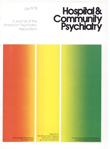A Review Board for Determining the Dangerousness of Mentally Ill Offenders
Abstract
Partly as the result of legislative changes made in 1975 and 1977, Texas has a workable system for dealing with mentally abnormal offenders and assessing the dangerousness of committed offenders. The author summarizes provisions of the law related to pretrial evaluation, competency to stand trial, dispositions after a ruling of incompetency, and the insanity defense. He describes the activities, during the first two years, of multidisciplinary review boards for manifest dangerousness; the boards met monthly to assess the dangerousness of patients committed to a state hospital's maximum-security unit after rulings of incompetency (without the probability of attaining competency in a foreseeable period) or of not guilty by reason of insanity. During the two years, the boards declared 171 of 364 patients to be not manifestly dangerous and thus ready for transfer or release, but they became more conservative in making judgments of not dangerous as time passed.
Access content
To read the fulltext, please use one of the options below to sign in or purchase access.- Personal login
- Institutional Login
- Sign in via OpenAthens
- Register for access
-
Please login/register if you wish to pair your device and check access availability.
Not a subscriber?
PsychiatryOnline subscription options offer access to the DSM-5 library, books, journals, CME, and patient resources. This all-in-one virtual library provides psychiatrists and mental health professionals with key resources for diagnosis, treatment, research, and professional development.
Need more help? PsychiatryOnline Customer Service may be reached by emailing [email protected] or by calling 800-368-5777 (in the U.S.) or 703-907-7322 (outside the U.S.).



